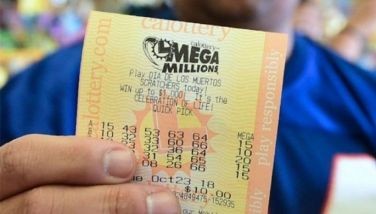Barangay power

Love it, hate it, or plainly ignore it, the fact remains that the barangay with its coterie of elected officials will continue to be a political unit that every Filipino will have to live with for years to come.
In a sense, it is good news that every three years, sometime in between local government elections, every resident Filipino will have the power to choose who will govern the neighborhood in which he lives. This is contained in the latest legislation, signed September 2005, stipulating that barangay elections be held every three years beginning the last Monday of October this year.
The barangay has been with us since pre-Hispanic days, when the datu was then the acknowledged leader. When the Spaniards came, a datu was renamed a cabeza de barangay, but lost most of its power as the Spanish government strengthened its clout across the country.
When the Americans took over, the barangay was renamed barrio, and the title of cabeza gave way to barrio captain or tiniente del barrio. Under the Marcos regime, the barangay was once again revived, and the name of its head replaced to barangay captain.
Attempts to modify
The Local Government Code of 1991 has given back the barangays more power and structure, as well as responsibilities, although there have been continued attempts to modify, even abolish, this most basic of the country’s political units.
For example, Vice President Jejomar Binay several months ago – perhaps culling from his experience as a mayor – addressed a group of local government officials with the proposal to give municipal and city mayors the authority to appoint barangay chairmen who they can trust and are most comfortable working with.
This had been echoed by Senate President Juan Ponce Enrile, who also proposed to replace the Sangguniang Kabataan with youth representatives to be elected in provincial, city and municipal boards.
Binay said the abolition of the barangay elections would not only save the government more than a P2 billion in election-related expenses and honoraria, but would likewise foster unity and peace in barangays since elections in this smallest political unit is a contest among neighbors and often gets very personal.
Still too much politics
But the law stresses that barangay leaderships are apolitical, even as this has been difficult to implement in our highly politicized society. The barangay, while chiefly responsible for local matters such as peace and order, constitutes a powerful link for any serious municipal, city, provincial and national politician. The temptation is just too much to resist!
There are barangay councils, however, that have managed to dance an apolitical tune, and have remained true to the pure calling of public service, putting their constituents’ needs first and foremost. But these are far and few in between.
While we have too much politics already, it looks like wishful thinking to distance the barangay councils from the mainstream political system.
Improve basic service delivery
The challenge to barangays is how to improve the delivery of basic services to their constituents. This includes keeping the community working on a fairly decent mode: having garbage collected on time, keeping crime nil or on almost non-existent levels, and ensuring basic health care delivery services, among others.
The barangay system has also fairly been efficient in delivering basic adjudication services that ensue between misunderstanding individuals or individuals vs business interests in the community. This has taken a load off the regular courts since conflicts are encouraged to be resolved at the barangay level.
If there is one power that the Local Government Code has vested on the barangay government that I disagree on, it is that which arises in misunderstandings as to the extent of levies, taxes, fees and charges that may be charged on businesses.
SK in question
If the barangay will likely survive well into another century, the Sanguniang Kabataan is a different matter. A remnant of the Kabataang Barangay organized during the Marcos era, today’s SK continues to carry the stigma of self-serving governance.
If it was seen before as the platform of Marcos’ daughter, Imee, to take over the reins of government should her father retire or become incapacitated, today, the SK has been the playground of local politicians seeking to perpetuate their families’ political dynasties.
The SK is a good training ground for young leaders, true, but it is too closely intertwined with political personalities at the local levels. It does not just train SK officials in managing livelihood, sports and culture projects for the youth; it is an initiation to the undesirable intricacies of Philippine politics, including corruption.
At age 15 to 18, which is the age requirement to be an SK official, the young elected official is given access to resources that are supposed to be put to good use for the benefit of the sector he represents.
Besides the temptation of handling millions of pesos of taxpayers’ money, it is the inexperience that comes with age that will prove more challenging in dealing with the complexities of bureaucratic accounting and accountability.
There must be other ways to involve the youth in more serious community development activities. At present most of the SK projects merely involve games, concerts or clean-up drives anyway.
Collegiate basketball update
Twelve teams from Luzon and Metro Manila “mother leagues” are participating in the Luzon-Metro Manila zonal games of the PLDT-SMART sponsored Champions League (PCCL) 2010 Philippine Collegiate Championship. Games will start on November 10, 2010 at the Arellano University gym at Legarda, Sampaloc, Manila.
The teams are divided into four groups as follows:
Group A teams are the National University Bulldogs (UAAP 5th placer), the Sta Monica Cougars (UCAA champion), and the San Beda College-Alabang Red Lions (NMC champion).
In Group B are the Letran Knights (NCAA 5th placer), the St. Francis Doves of UCLAAI, and University of Baguio Cardinals (North-Central Luzon regional champion).
Teams in Group C are the University of the East Warriors (UAAP 6th placer), University of Manila (NAASCU champion) and the UPHS-Laguna Saints (NCAA-South champion).
In Group D are the Arellano U Chiefs (NCAA 6th placer), the Lyceum of the Phils. Pirates (ISAA champion), and the Computer Communications Development Inst. Wildcats (Luzon-Bicol regional champion).
The teams will play a single round robin with the top team of each group advancing to the Sweet 16 Finals. Ties will be broken in accordance with the FIBA rules.
Visit www.CollegiateChampionsLeague.net for more details about the 2010 Philippine Collegiate Championship games.
Should you wish to share any insights, write me at Link Edge, 25th Floor, 139 Corporate Center, Valero Street, Salcedo Village, 1227 Makati City. Or e-mail me at [email protected]. For a compilation of previous articles, visit www.BizlinksPhilippines.net.
- Latest
- Trending






























